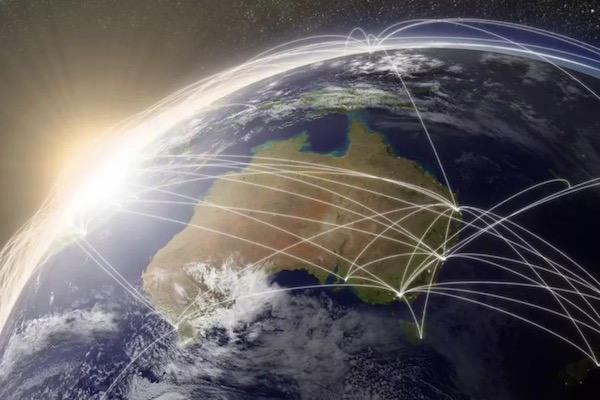Published on the 24/05/2023 | Written by Heather Wright

AI, robotics and clean energy in updated Critical Technologies list…
The Australian Federal Government is betting big on technologies including artificial intelligence and robotics for Australia’s future with the latest ‘critical technologies’ list for the country also including a new priority in clean energy.
The list which includes a wide range of ‘example’ technologies across seven key technology areas, is designed to ‘safeguard’ critical technologies industries and ‘help ensure we are all pulling in the same direction for research, investment, talent attraction and international collaboration and that government policy is cohesive and aligned’, the government says.
“Local investment in critical technologies is a force multiplier for wider economic priorities.”
It’s also designed to provide some guidance to business of the areas business and industry need to be prepared to take advantage of.
The updated list includes a number of tweaks to the previous categories. This year’s List of Critical Technologies key areas include advanced manufacturing and materials technologies, artificial intelligence technologies and quantum technologies.
Advanced information and communication technologies, autonomous systems, robotics, positioning, timing and sensing; biotechnologies and clean energy generation and storage technologies round out the list.
They’re the technologies the government is backing, saying it will focus on them to give the country ‘a clear competitive advantage’, accelerate productivity growth and create well-paying jobs.
The list enables better co-ordination of technologies with the potential to affect Australia’s economic prosperity, national security and social cohesion, the government says.
Industry and science minister Ed Husic says the updated list focuses on key enabling technology fields that will have a high impact on the national interest, including providing opportunities to grow the economy, provide well-paying jobs and improve the lives of Australians.
He says AI and robotics are already driving higher productivity and well-paid jobs across Australian businesses, with the updated list complementing the government’s first National Quantum Strategy, released earlier this month.
“Quantum technologies are identified as a priority filed within the List of Critical Technologies, and are poised to accelerate developments in sensing, communications and computing for generations to come,” he says.
CSIRO has estimated that digital innovations including AI could contribute $315 billion to Australia’s GDP by 2030, with Australian businesses reporting an average revenue benefit of $361,315 from using AI, along with time savings of around 30 percent across all AI initiatives they have implemented.
“The increased uptake of critical technologies will underpin future productivity growth across the entire economy, supporting areas where jobs cannot be filled and delivering the means for wages growth and an increase in secure, well-paid jobs,” the accompanying Critical Technologies Statement says.
“Local investment in critical technologies is a force multiplier for the Australian Government’s wider economic priorities. For example, critical enabling technologies are a central element of our National Reconstruction Fund, which will underpin the diversification and transformation of Australia’s industry and economy, securing productivity increases and economic prosperity.”
This month’s 2023-24 Budget included $101.2 million over five years to help drive AI and quantum use in business, adding to the $1 billion set aside for critical technologies through the National Reconstruction Fund.
The list includes a new priority on clean energy generation and storage technologies.
“Breakthroughs in this area will be crucial in our efforts to improve energy security and achieve net zero emissions,” Husic says.
The new list follows consultation last year to identify current and emerging technologies deemed critical for Australia today, or within the next 10 years.
That consultation saw criticism that the previous list, announced in 2021 by the Morrison government and including 63 technologies across seven categories (advanced materials and manufacturing; AI, computing and communications; biotechnology, gene technology and vaccines; energy and environment; quantum; sensing, timing and navigation; and transportation, robotics and space) was too comprehensive and didn’t adequately prioritise technologies.
Concerns were also raised about ‘mixed signals’ the list sent to investors, with uncertainty over which technologies represented the highest priorities, or whether the technologies on the list would be subject to more scrutiny and regulation.
The Critical Technologies Statement says the list will help inform decisions when developing options and deciding actions around technologies.
“A balanced, whole-of-government approach to critical technologies policy will ensure all government portfolios are working together to identify and harness opportunities within the broader strategic context,” the statement says.
To ensure Australia achieves ‘maximum value’ from the technologies, the government says it wants to champion research, ideas and industrial strengths and capabilities; ensure uninterrupted access to the technologies through trusted supply chains; and retain strategic capability and awareness of the international landscape.
A Critical Technologies Hub and node operating model in the Australian Public Service has been established within the Department of Industry, Science and Resources, to support initiatives. Three notes will provide expert scientific, economic and national security advice.
The list of critical technologies will be revised every two years, a shift from the previous annual cycle under the former Coalition government.



























